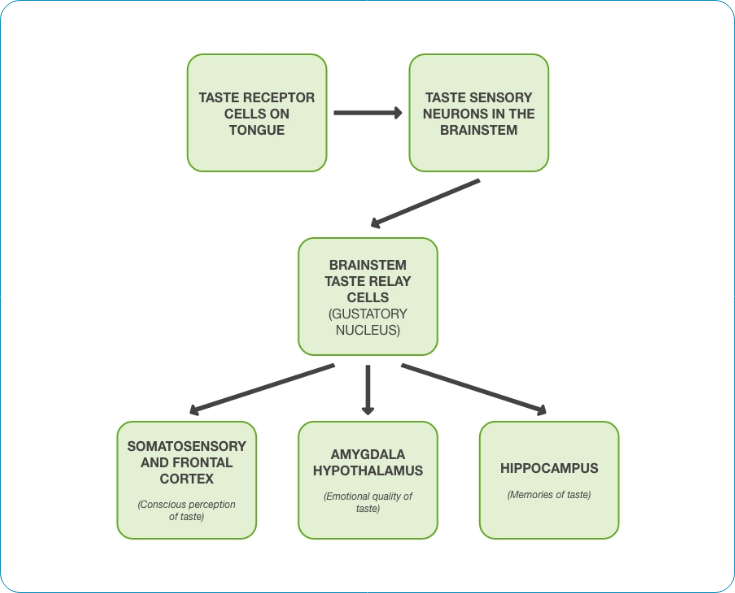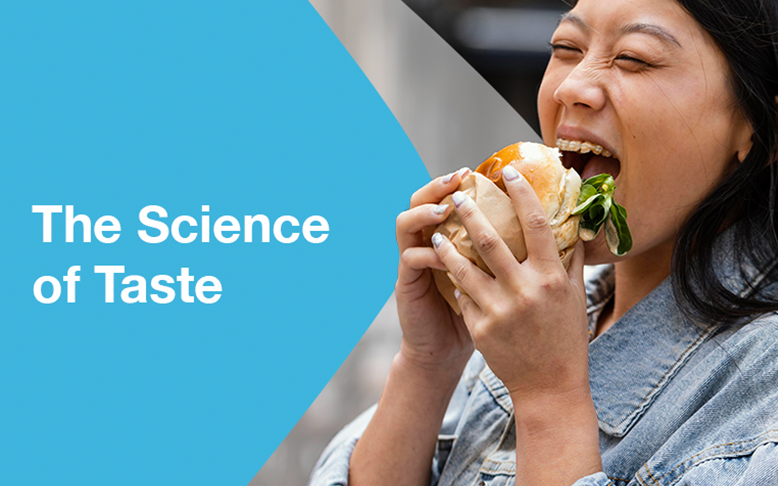Introduction
It is said that “People who love to eat are always the best people” -- but one will be hard-pressed to find a single person who doesn’t love food; obviously, with exemption to those who are diagnosed to have eating disorders or other medical conditions that affects the sense of taste or the digestive system in general.
In the digital age, food reviews remain to be one of the most popular online content among influencers and content creators. This makes one wonder: if almost every person loves to eat, then what makes these types of content extra special? Perhaps the answer to this lies in one the most influential organs in our body – the tongue.
The Sense of Taste
The sense of taste is a very sophisticated process of chemical signaling. All animals including humans regulate their intake of the necessary food through five basic taste modalities: sweet, bitter, sour, salty and umami (a meaty taste). In essence, the sweet taste signals the identification of energy rich foods, umami recognizes the amino acids of proteins, salt ensures the proper electrolyte balance and sour and bitter tastes warn against potentially toxic or poisonous intakes1.
It is through taste perception that in normal circumstances the body regulates its proportional intake of nutrients. The taste system, made up of taste receptor cells clustered in taste buds at the surface of the tongue and the palate plays a key role in whether we decide to swallow or reject food.
Research into taste requires isolating the genes which signal taste. It also requires tracing the pathways from the tongue and surrounding areas to the brain, which in turn activates various other circuits affecting behavior.
By sensing the five taste modalities, our sensory apparatus acts like an analytical chemical laboratory making independent measurements of ionic equilibrium, toxicity and nutritional value. Subsequently, the processing and ‘filing’ of this information in specific areas of the brain leads to the development of a perceived taste profile. These perceptions lead eventually to a pleasure-driven classification of likes and dislikes, needs and avoidances.
Once again, taste is rather a primitive aspect of our ability to identify specific foods. We actually use olfactory and visual cues more than taste per se.
Two systems modulating food intake and food uptake
Taste stimulation from the mouth is projected into defined cortical areas in the brain, resulting in taste perception. Similar information from receptors in the digestive tract initiates a metabolic response to the food present there. There seems to be no direct communication with the sensory areas of the brain, so interestingly the signaling appears to pass via the autonomic nervous system2.

Figure 1. How taste information reaches the brain (Murray, n.d.)
In general, all taste receptors bind specific molecules, which initiate an intracellular signal cascade leading to neurotransmitter release. Following neurotransmitter release, the chorda tympani, glossopharyngeal, and vagal nerves transmit taste information to the brain. Two complex mechanisms have so far been identified in this transmission system2.
These are ion channels and G-protein coupled receptors. Ion channels translocate ions across taste cell membranes and directly alter the ion balance which provokes neurotransmitter release.
G-protein coupled receptors act like switches in the membrane. On receiving a signal on the outside of the cell, they ‘notify’ the interior, which responds by a chain of chemical reactions leading to release of a neurotransmitter. The food-borne ligands (signals) that generate specific taste sensations have distinct biochemical properties. In each case, a metabolic consequence is also linked to the information sensed by these receptors4.
The tongue – how do chemicals on the tongue produce signals in the brain?
We now know much more about how the sense of taste works. In fact, this research has found that some of the previous ideas about how the process worked were quite wrong. We were taught as children that the tongue was mapped out into four sections each tasting sweet, salty, acid and bitter tastes. Now we not only know that there is a 5th taste, umami, but also, (and this is new) that the tongue detects all these tastes all over its surface5.
Sweet taste, the sensation provided by simple sugars is not sensed by a single protein, but by pairs of proteins acting together to form a chemical receptor. Interestingly, we have an almost identical sense system for amino acids. Thus, our brain is informed of the presence on our tongue of sugars and amino acids and the message in the brain is “swallow - this is good”. In parallel to these two kinds of receptors signaling something good, there is a family of very similar protein receptors that bind to molecules that resemble plant toxins. These receptors are wired directly through cells and neurons to the brain and the brain interprets these signals as “bad”. These are the bitter receptors. We have a large number of slightly different receptors on the tongue in order to sense many different kinds of toxic molecules. What is quite surprising is that we do not consciously discriminate between these tastes. They are all just “bitter”. The brain issues a warning about these foods i.e., “this is toxic - do not swallow this, spit it out “.
Intestinal taste receptors
How does the intestine affect food preference? Studies have shown that intestinal tissue also contains taste receptors. Even though these receptors are not connected to the same regions of the brain, the brain uses this information to make decisions about the food being digested6.
Appetite and food intake control
In ideal circumstances, there are a large number of sensing mechanisms from the gastrointestinal tract to the brain to control the intake of food. However, these messages can be ‘ignored’ (in some people and under some conditions) by conscious or subconscious decisions based on environmental or emotional considerations.
An area of the brain, the nucleus accumbens, is the centre of pleasure and reward systems. Addictive behaviors involving the intake of neurologically active substances (e.g., drugs) also stem from cues from this small area. The brain is thought to have a so-called “homeostatic regulator” which should, theoretically at least, prevent conditions such as obesity. However, this regulator can, in certain conditions, be overwhelmed by the cognitive and pleasure-seeking brain, whose receptors in the nucleus accumbens encourage us to pursue indulgent behaviors and the “thrill of living on the edge”.
It has also been pointed out, when discussing obesity, that negative feedback from the systems discussed in the schema above, might arrive in the brain too late to have an effect on meal intake. Apart perhaps from the “stretch” receptors in the stomach, most of the receptors start acting once the food is already ingested, and people today tend to eat high calorie foods at high speed.
Amnesic patients can easily eat two meals, one straight after the other if they have forgotten they have already eaten. The homeostatic regulator, which is strong on preventing hunger, but weak on preventing overconsumption, presumably provided an evolutionary advantage, to ensure that animals maintain energy reserves (e.g., for hibernating mammals).
If you reach this point of the article, then probably you now have more knowledge about our seemingly magical sense of taste and how it works. So, the next time you’d be watching another mukbang vlog, you’ll have a sense as to why it rakes in thousands of likes.


 Nestlé
Nestlé















No comments here yet.